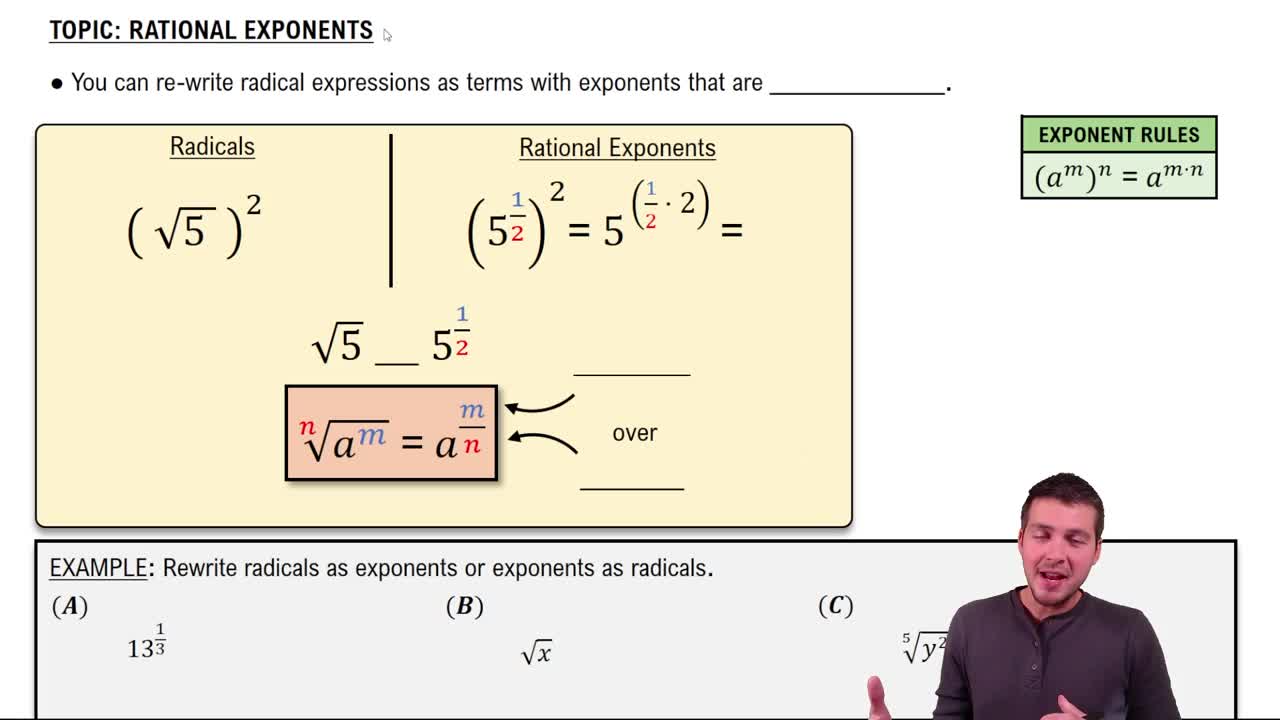Here are the essential concepts you must grasp in order to answer the question correctly.
Rational Exponents
Rational exponents are a way to express roots using fractional powers. For example, an exponent of 1/n indicates the n-th root of a number. Thus, a rational exponent like ¾ can be interpreted as taking the cube root of a number and then squaring the result. Understanding this concept is essential for simplifying expressions involving rational exponents.
Recommended video:
Properties of Exponents
The properties of exponents include rules that govern how to manipulate expressions with exponents. Key properties include the product of powers (a^m * a^n = a^(m+n)), the power of a power ( (a^m)^n = a^(m*n)), and the power of a product ( (ab)^n = a^n * b^n). These rules are crucial for simplifying expressions with multiple exponents.
Recommended video:
Simplification of Expressions
Simplification involves rewriting an expression in a more manageable or standard form. This often includes combining like terms, reducing fractions, and applying exponent rules. In the context of rational exponents, simplification may involve converting fractional exponents back to radical form or vice versa, making it easier to evaluate or compare expressions.
Recommended video:
Introduction to Algebraic Expressions
 Verified step by step guidance
Verified step by step guidance Verified Solution
Verified Solution

